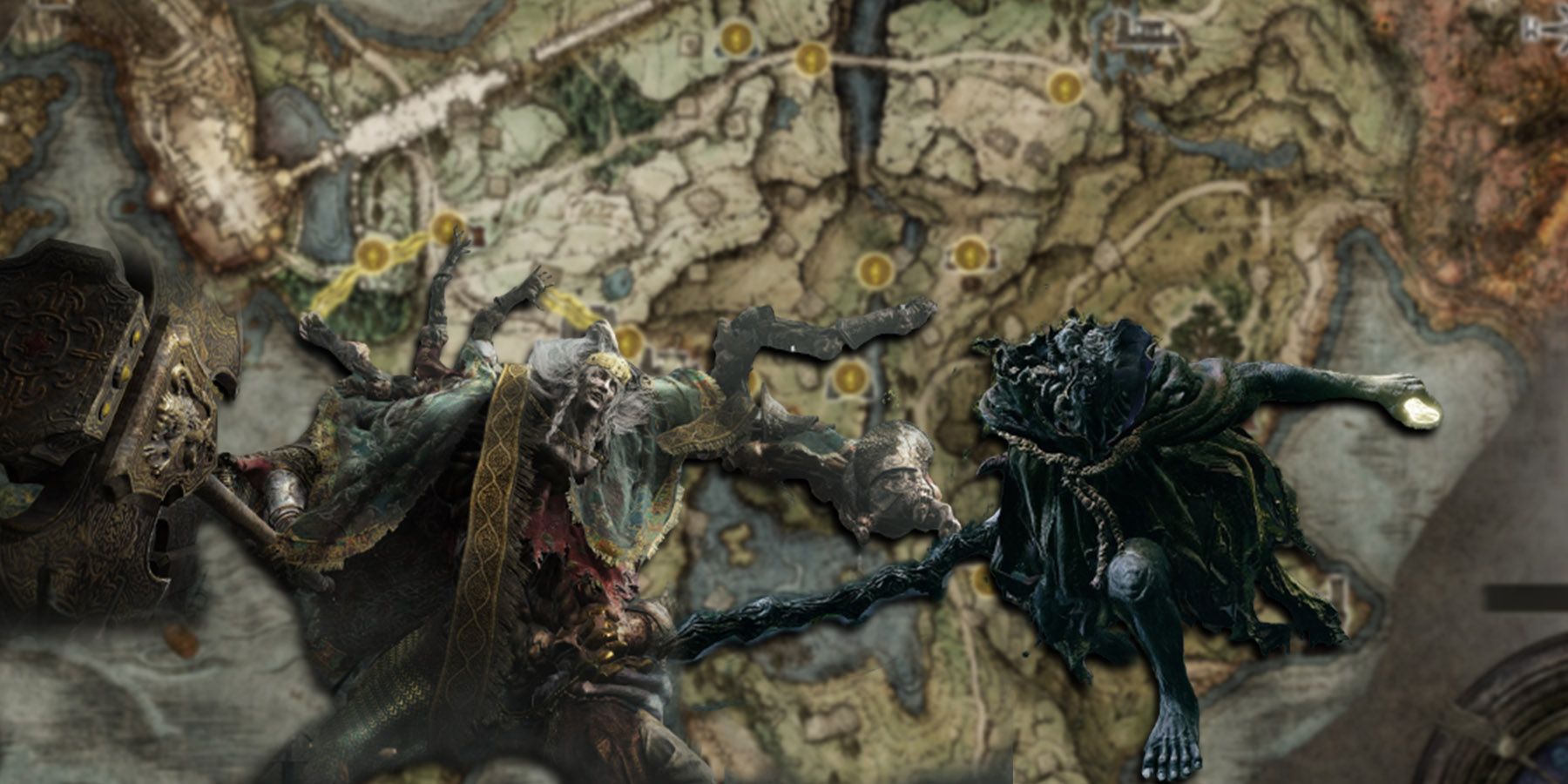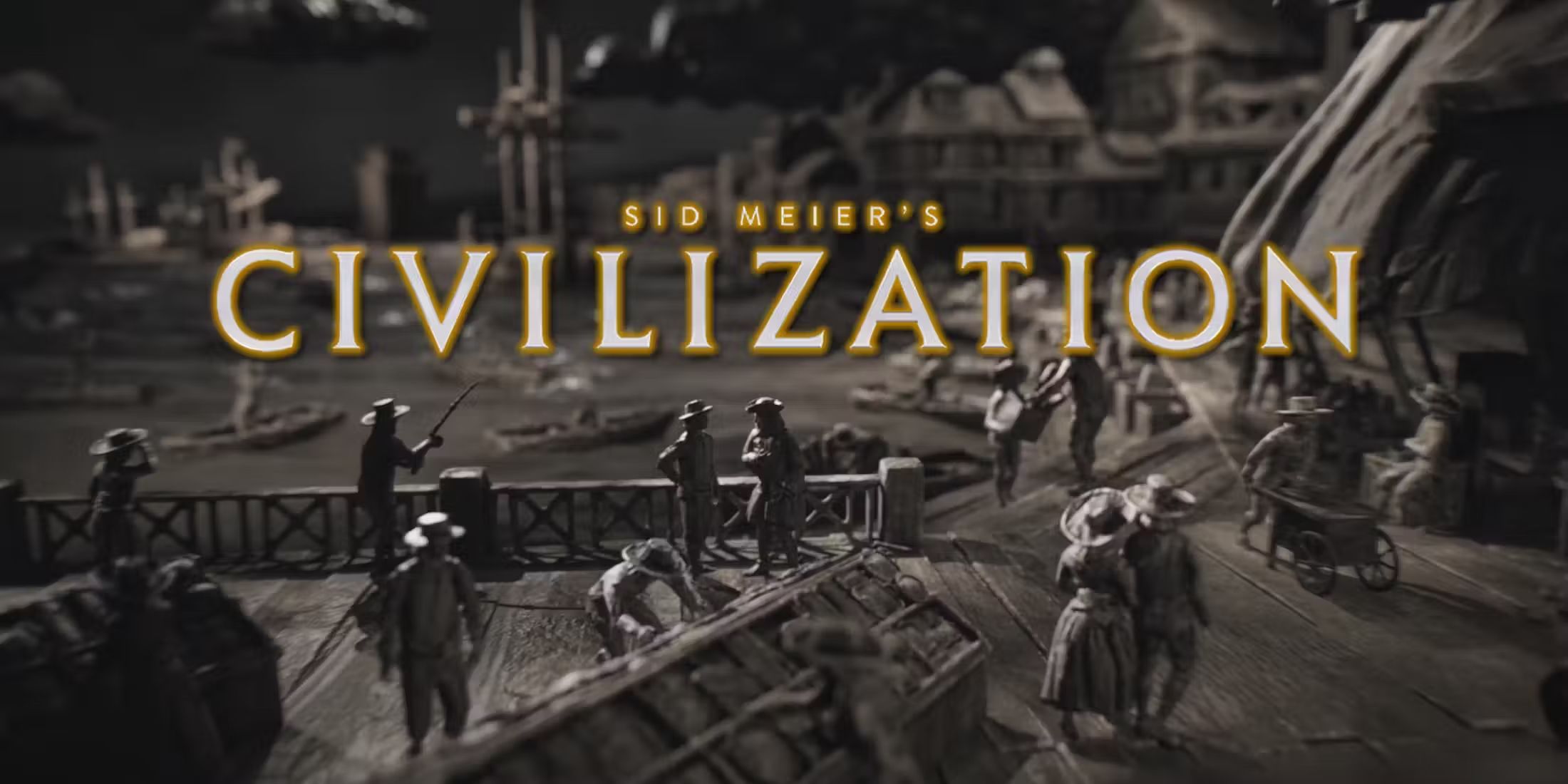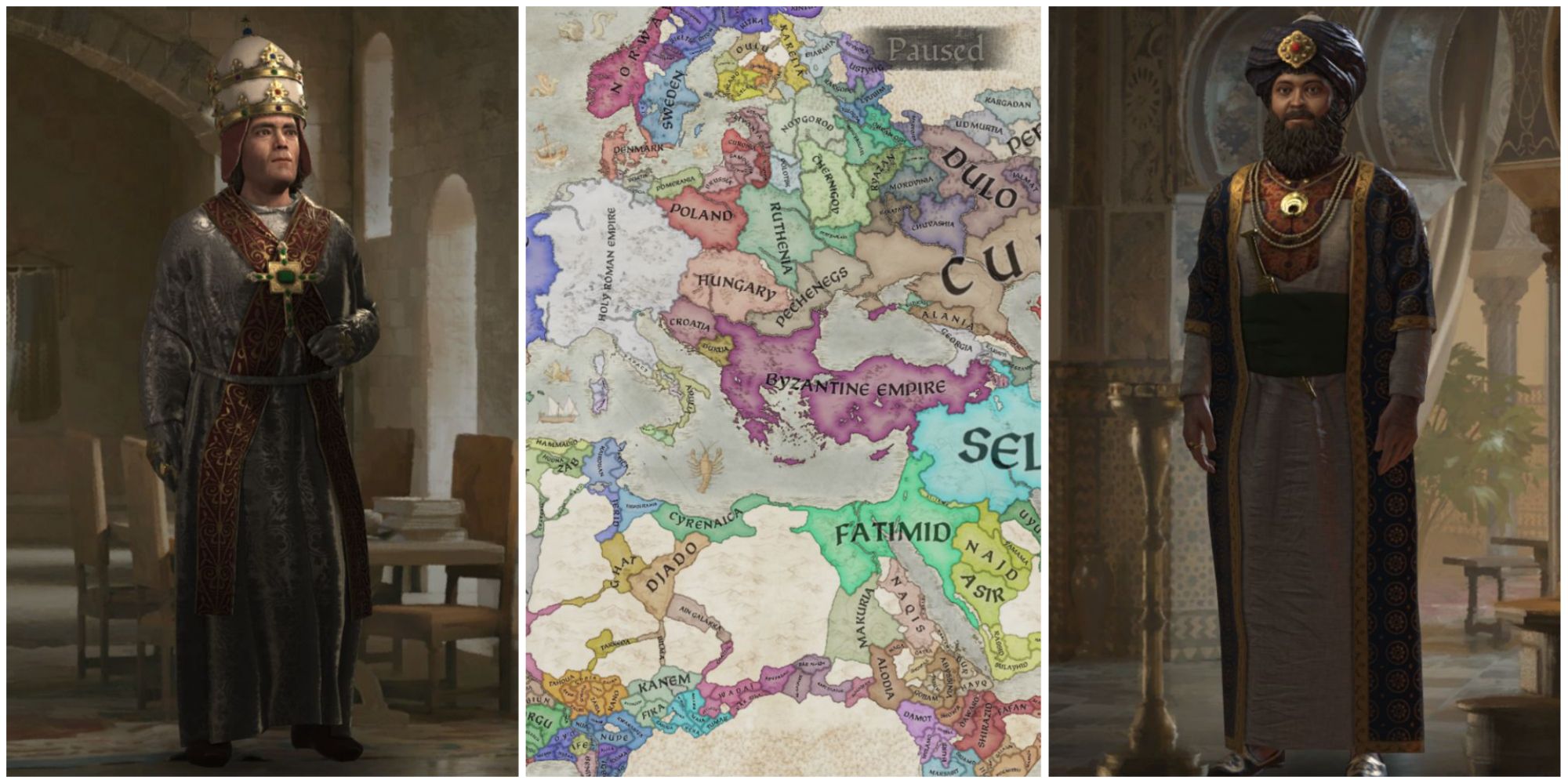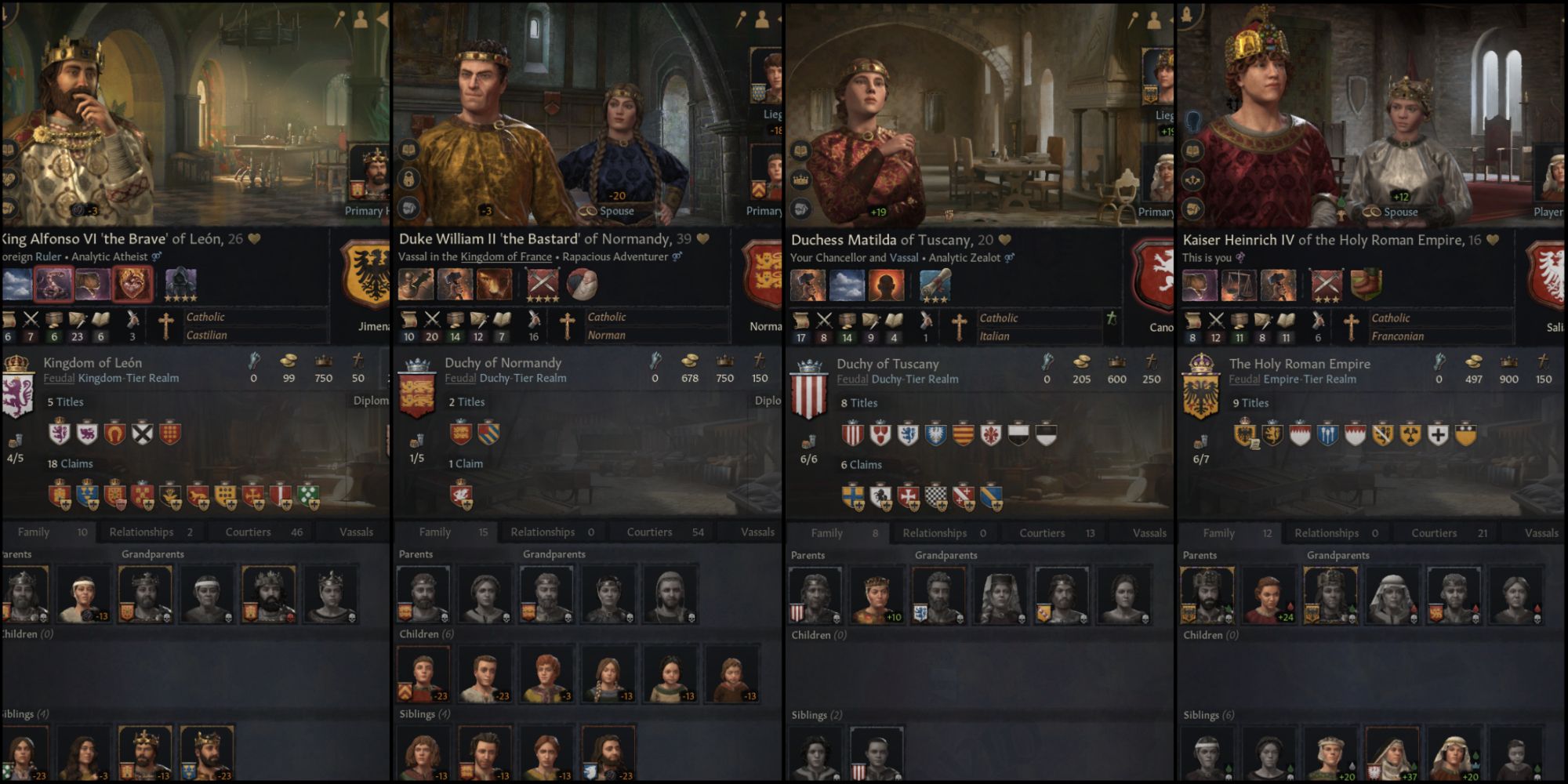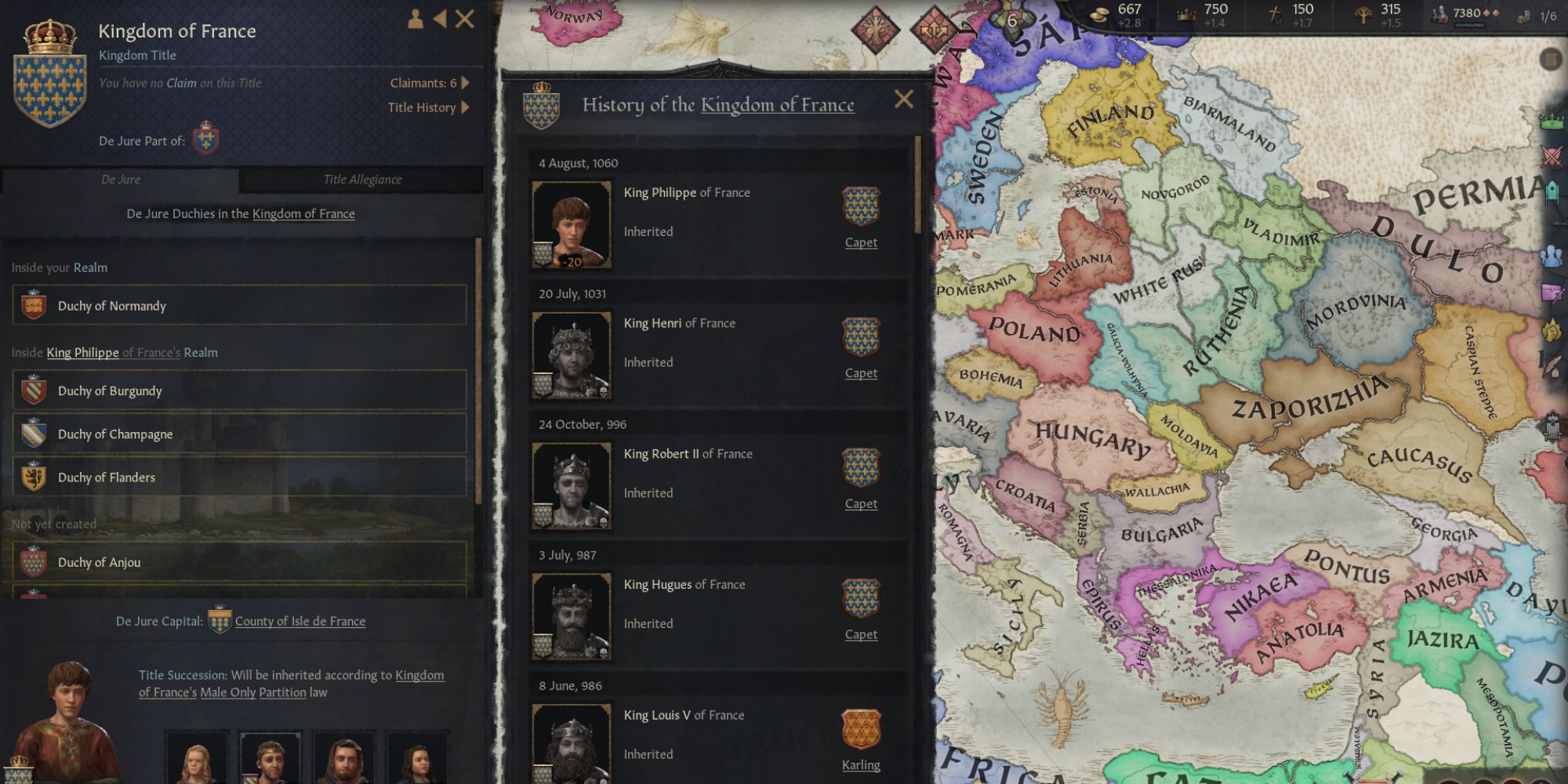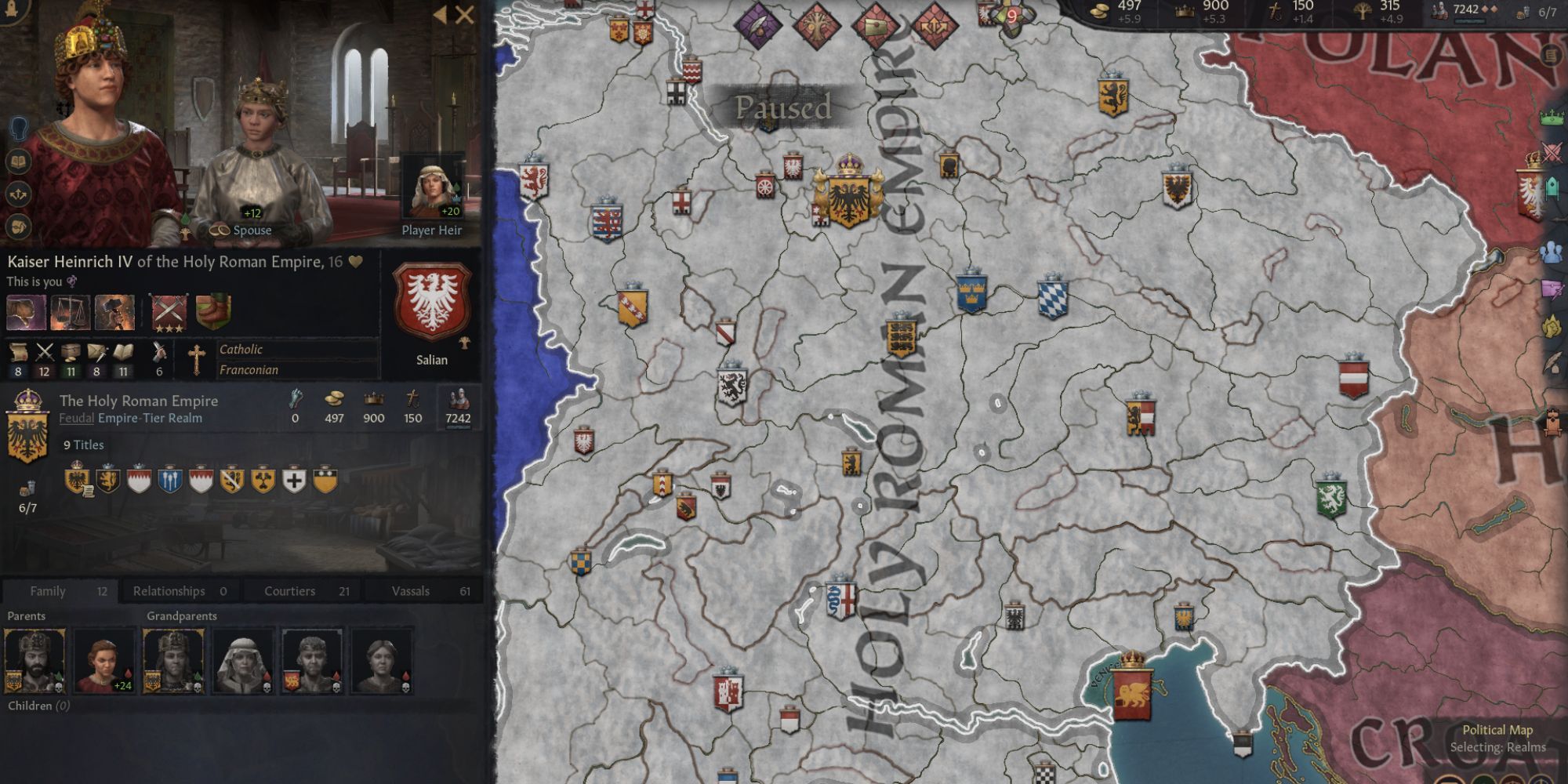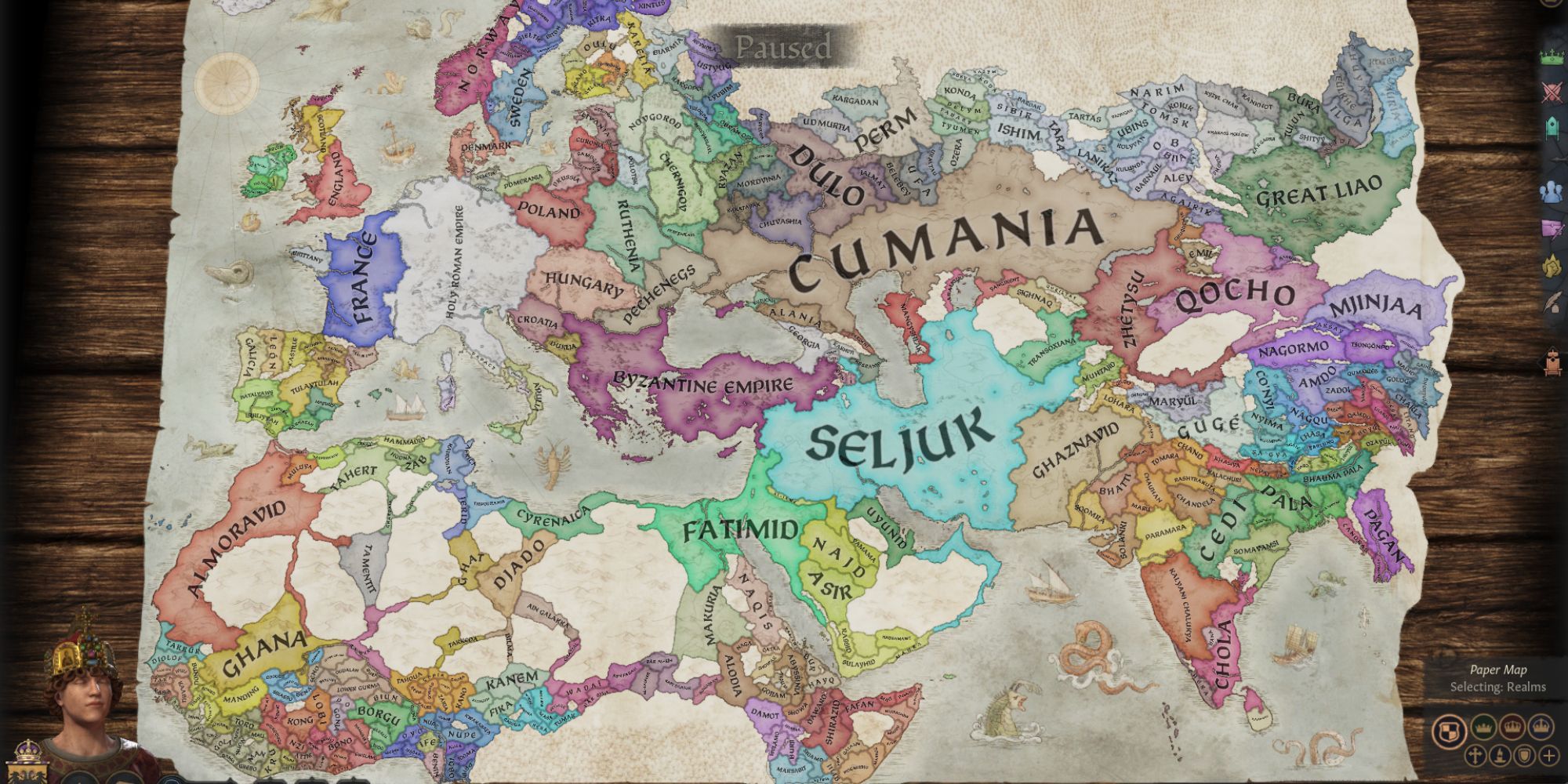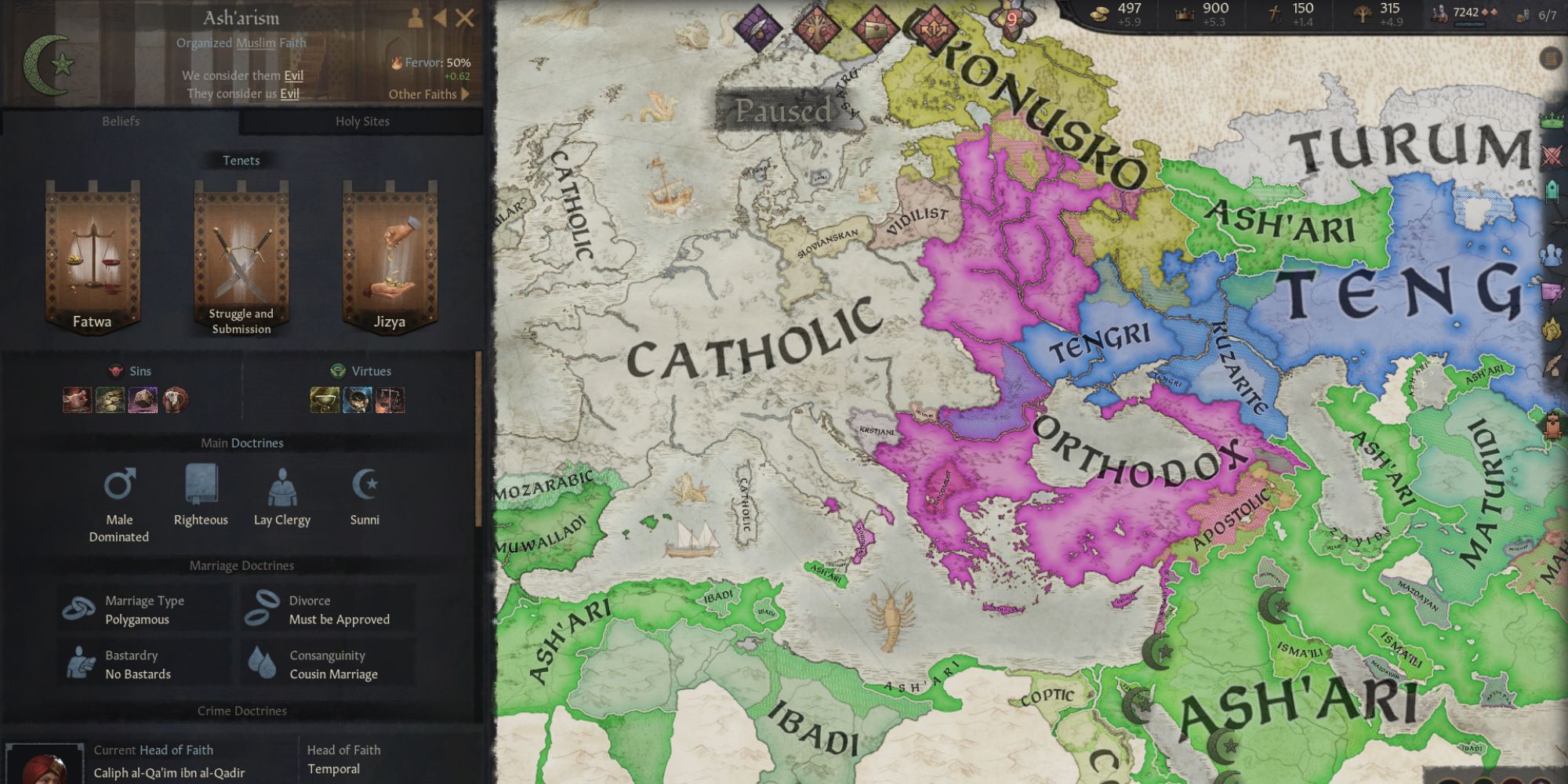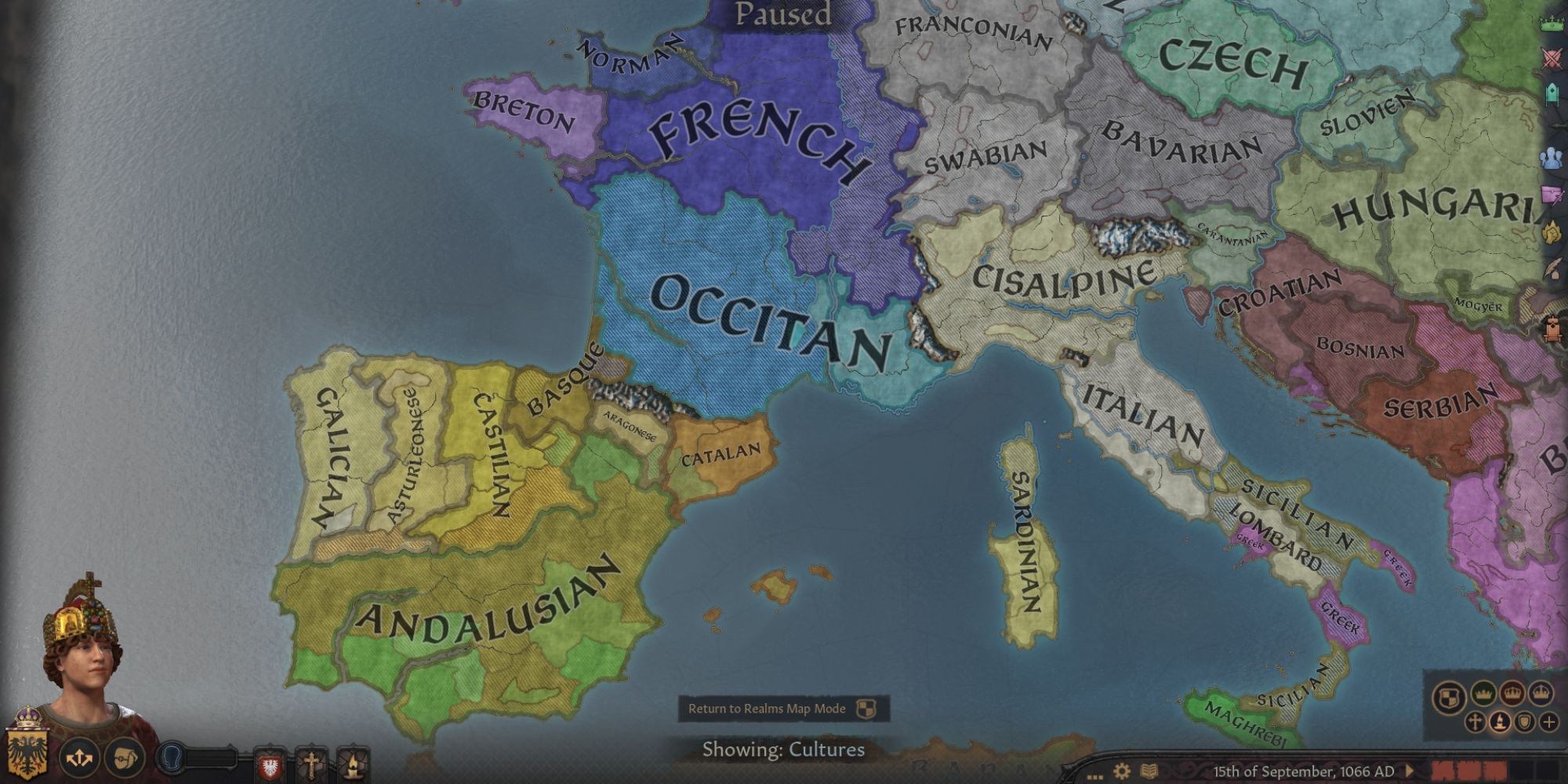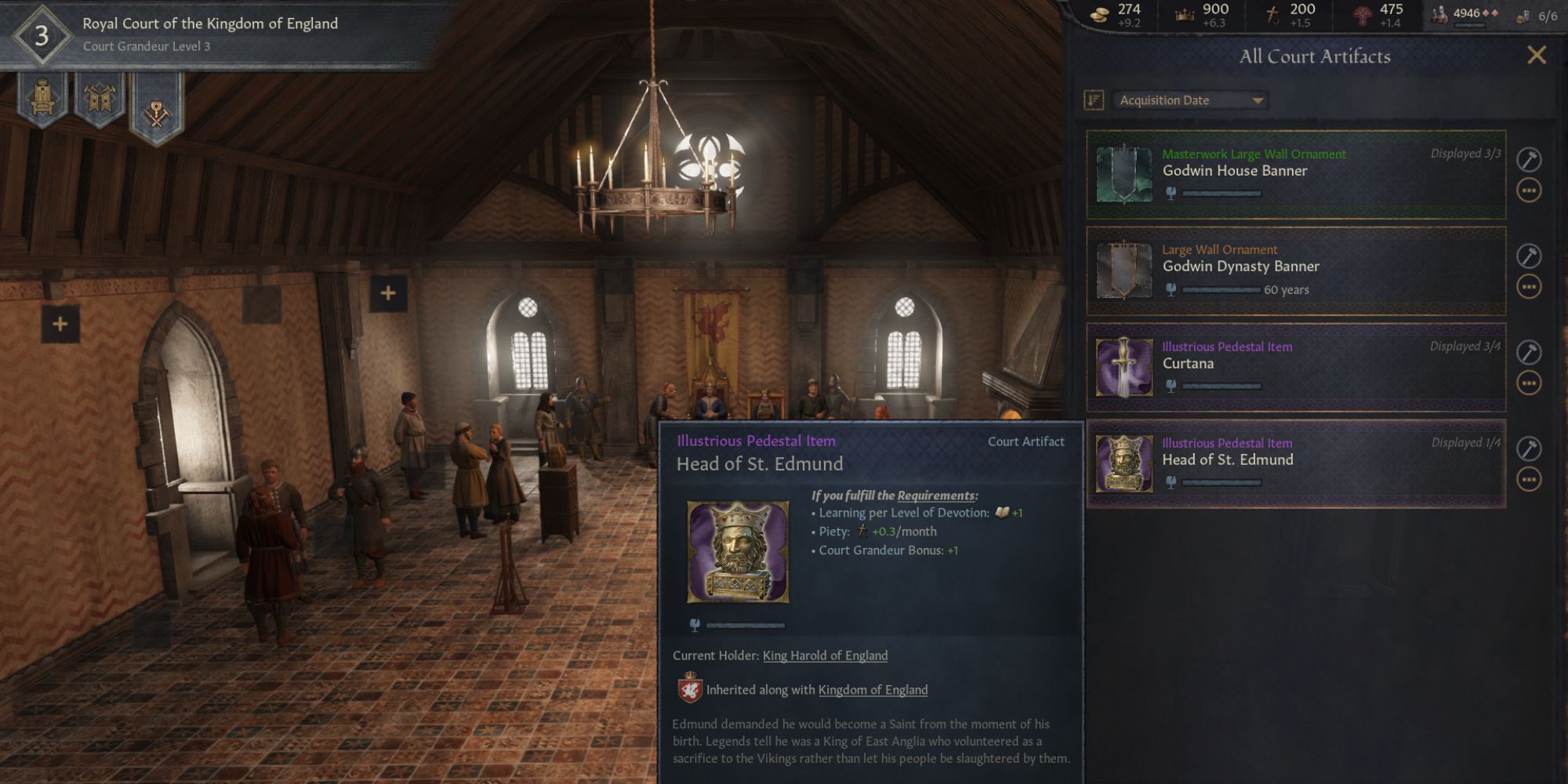Video games by nature are a form of entertainment, but that doesn't mean players can't learn while gaming. Nowhere is this more apparent, than in Crusader Kings 3, a grand strategy game that puts players in the shoes of medieval rulers.
While it would have been impossible for Paradox Interactive to make a completely historically accurate game without sacrificing gameplay features, there are still many facts, details, and concepts that can introduce players to the real Middle Ages. The base game of Crusader Kings 3 has two start dates, the years 867 and 1066, and it is around these years that players will learn the most. For a better selection of start dates, there are mods available that add more start dates such as More Bookmarks+.
7 Historical Figures And Families
Crusader Kings 3 is made up of lots of characters, most of whom were real medieval kings, queens, dukes, and more. All of these characters can be clicked on to bring up a character page which among other things, shows their age, religion, titles, and traits. Although real humans don't have set and defined personality traits, it can still be useful to get an idea of what kind of person a historical figure was. The best feature of the character pages, however, is the family tab. The family tab is split into three levels, with parents and grandparents on top, any offspring in the middle, and siblings on the bottom. The character's spouse is also shown at the top, and it is even possible to click on an arrow to see former spouses who were either divorced or deceased.
All of these family members shown together in one self-contained tab is a great way to get familiar with medieval family trees and see how everyone is connected. What is more, is that all these characters can be clicked on themselves, which will bring up their own character page and information, as well as showing you the family from their perspective. For some more well-documented dynasties, it is even possible to keep clicking on parents or grandparents and go down a rabbit hole spanning hundreds of years.
6 Historical Dates
Learning dates off by heart has long been dreaded by students of history, but Crusader Kings 3 makes it so easy, players won't even realize they are learning. Dates are dotted throughout the game, from the birth and death dates of historical characters to the dates on which titles passed from person to person.
To find title dates, simply click on a title, for example, the Kingdom of France. Then in the top right of the tab brought up, is the Title History button. For well-documented accessions, the history can stretch back surprisingly far, the longest of these being the history of the Papacy.
5 Heraldry
Crusader Kings 3 is scattered with heraldry. From the map to all aspects of the UI, as well as the throne rooms of the Royal Court DLC, players will see banners and coats of arms everywhere they look. These examples of heraldry can be for Dynasties, Houses, and titles of all ranks.
Over time players will come to recognize a multitude of banners and associate them with the names of what they represent. However, the use of heraldry was not uniform across all regions or time periods in medieval history, so be aware, especially with the 867 start date that the developers will have added some of the heraldry to help with readability.
4 Medieval Geography
After staring at Crusader Kings 3's map for hundreds of hours, it is hard to not learn even a bit of geography. The map covers the entirety of Europe and a large portion of Asia, as well as northern Africa. By zooming in and out, players can see different levels of detail, from empires and kingdoms all the way down to individual counties with their own castles, cities, and religious buildings.
Observing the map at a distance will allow players to get familiar with the borders of medieval empires and kingdoms, which very often don't line up with modern national borders. It should be noted though, that just as with real history, these borders will change throughout the course of the game. Nevertheless, even just learning the names of smaller kingdoms that no longer exist, such as Aragon or Navarre, can be of use. On a more local level, players can choose to play in any region they want, and so may end up learning the local geography of a place they previously had no knowledge of.
3 Faiths And Heresies
Just as today, the medieval world was home to a wide array of different faiths, each with its own branches. Bringing up the faith map on Crusader Kings 3 will show the faith held by the top liege in any given region. This map will also show the major holy sites of the religion currently selected. For example, when Ash'arism is selected, holy sites such as Medina and Mecca will be shown.
Details of all the faiths in the game can be found, which will give players an introductory level of understanding about doctrines and tenets. Even just the list containing all the faiths can help players become familiar with names. This list also includes what might be known as heresies and before starting a game, players can select a game rule which will make heresies pop up in more historically accurate regions.
2 Medieval Cultures
Characters and regions have different cultures in Crusader Kings 3. Each culture has its own set of defining features, such as a language group, an ethos, and traditions. What players might be surprised by, is just the sheer amount of cultures, especially those within a single modern nation.
One of the best examples can be seen in France, where in the 1066 start date there are four distinct cultures present: French, Norman, Breton, and Occitan. This can all be seen by switching to the culture map and can open players' minds to just how distinct cultures could be, this just being the start.
1 Artifacts
With the addition of the Royal Court DLC for Crusader Kings 3, players are able to acquire and commission historical and religious artifacts. The power these artifacts have in the game serves to highlight just how treasured and sought-after, real artifacts and relics were in the Middle Ages.
Although the artifacts that a player commissions throughout the course of the game won't be real, there are many artifacts at the start of the game which are. Examples of these include the Reichskrone and the Head of St. Edmund.
Crusader Kings 3 is available now on PC, PS5, and Xbox Series X/S.

